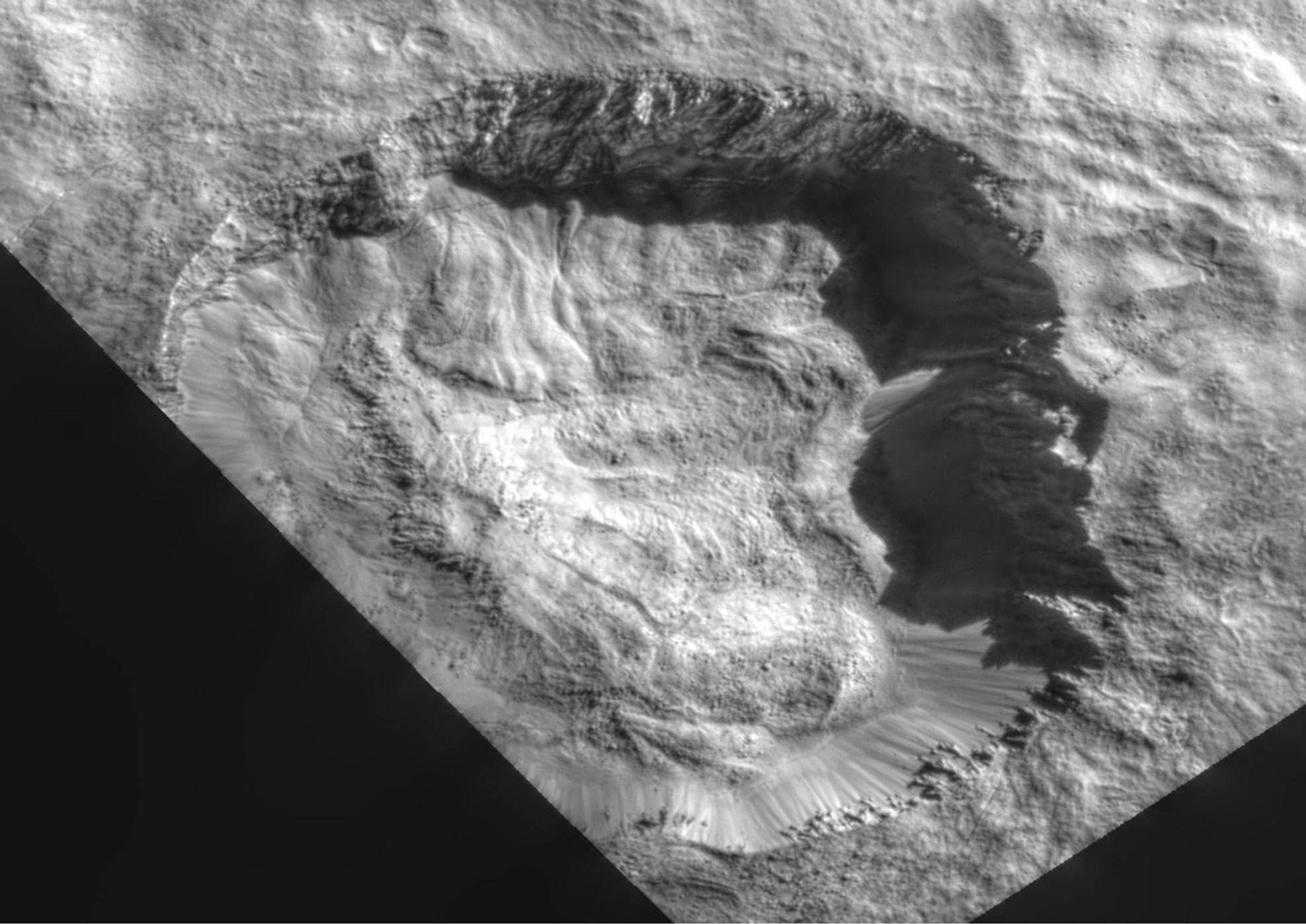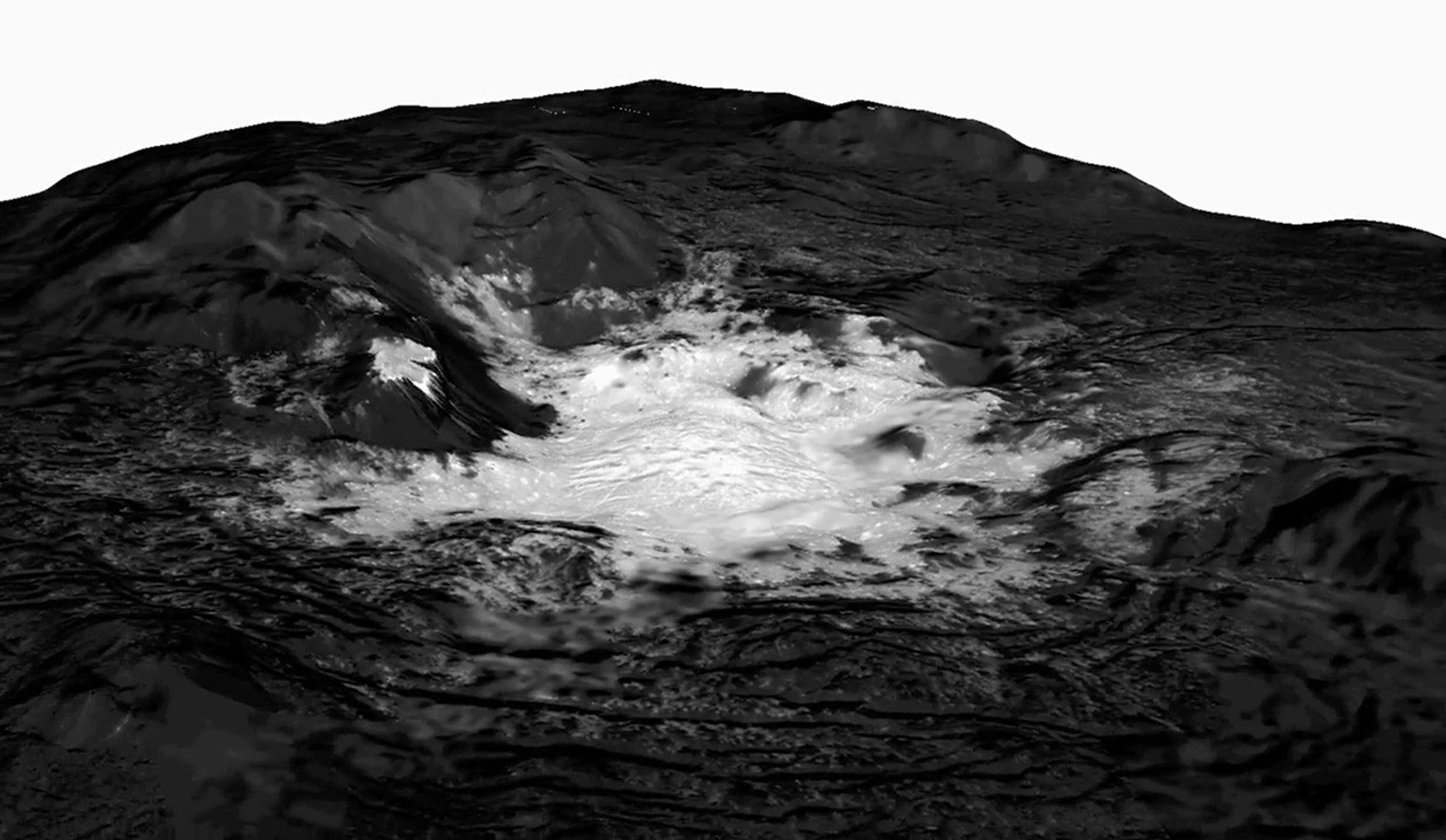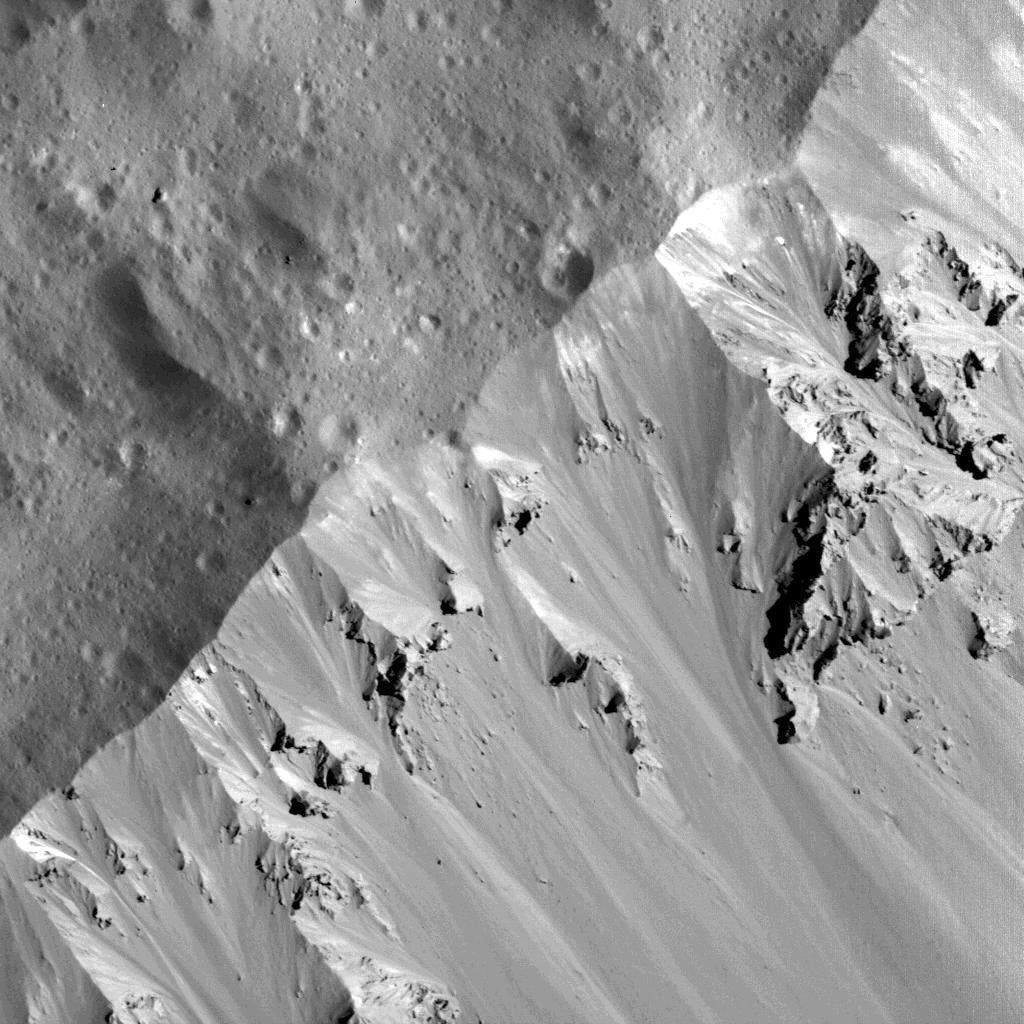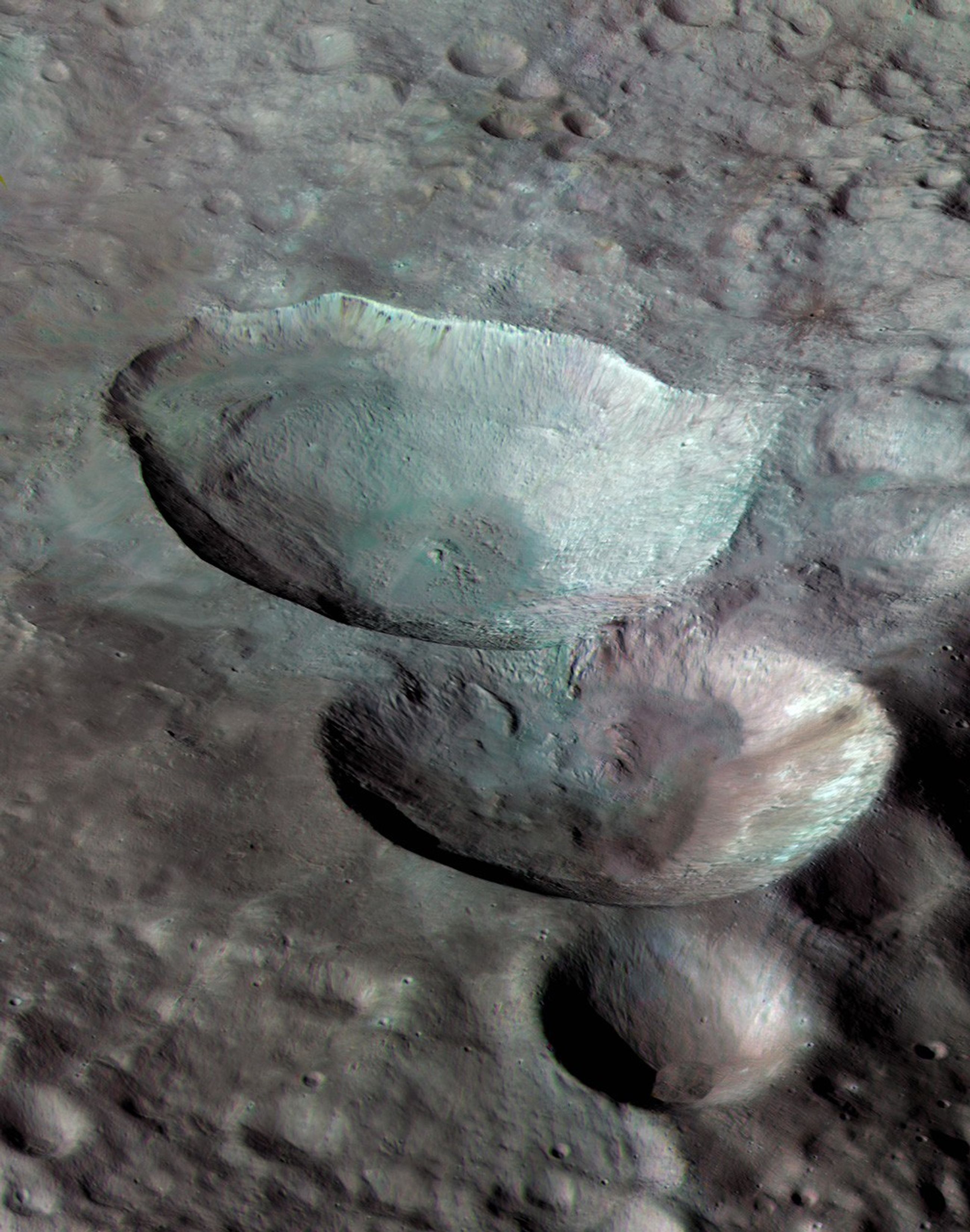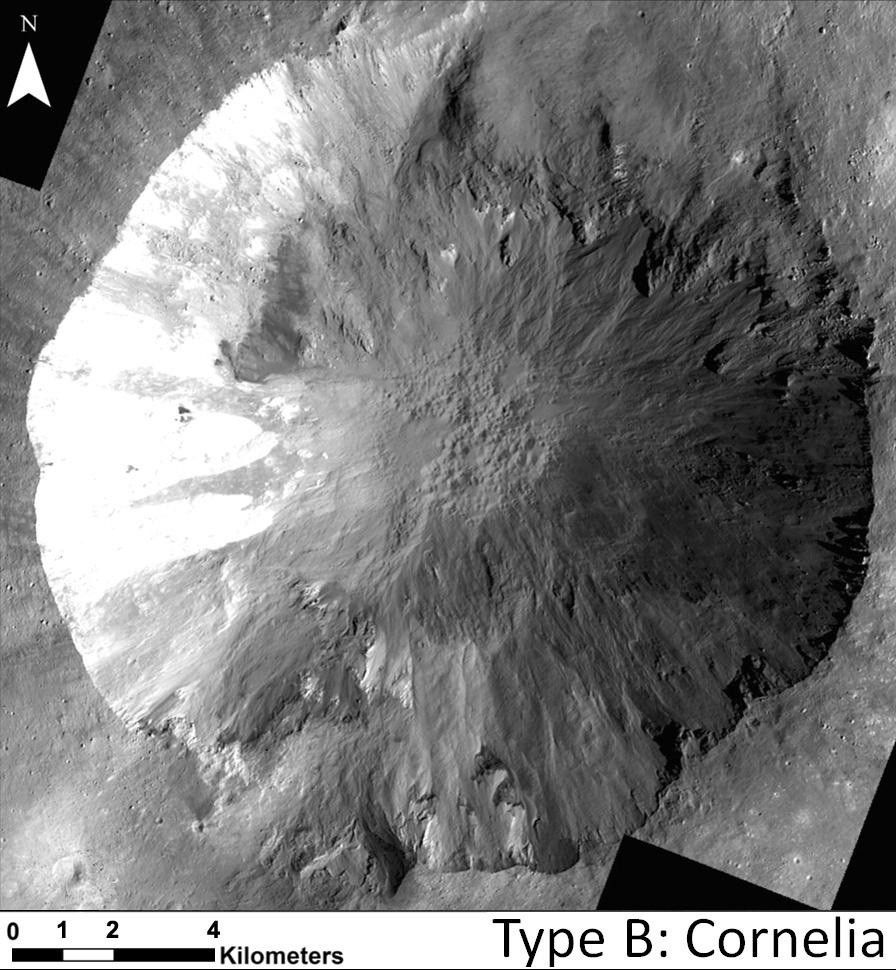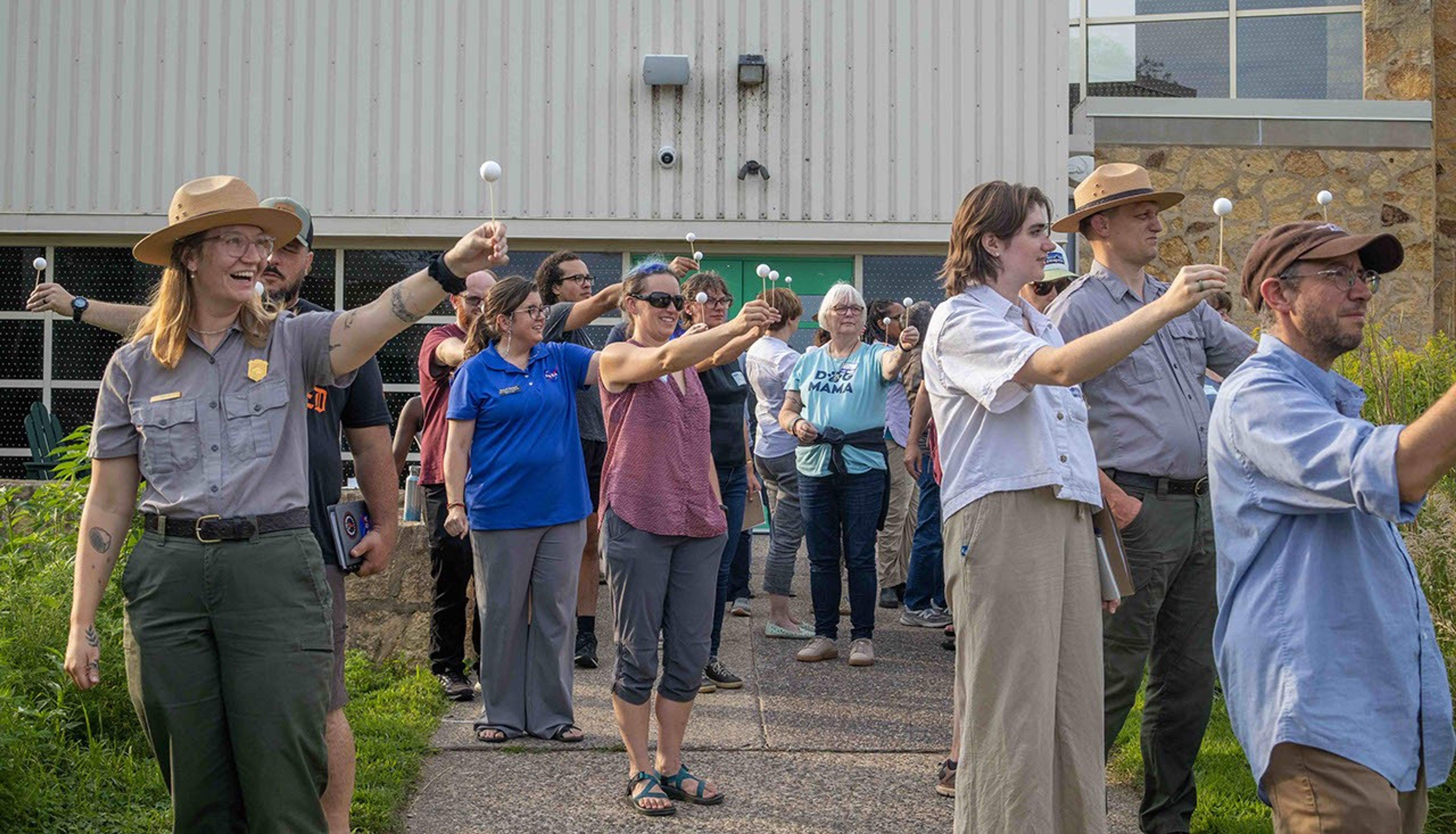NASA's Dawn spacecraft has gone silent, ending a historic mission that studied time capsules from the solar system's earliest chapter. The Dawn spacecraft launched 11 years ago to visit the two largest objects in the main asteroid belt, dwarf planet Ceres and giant asteroid Vesta.
The data Dawn beamed back to Earth from its four science experiments enabled scientists to compare two planet-like worlds that evolved very differently. Among its accomplishments, Dawn showed how important location was to the way objects in the early solar system formed and evolved. Dawn also reinforced the idea that dwarf planets could have hosted oceans over a significant part of their history – and potentially still do.
Here are some of the greatest shots from its extended mission in the main asteroid belt between Mars and Jupiter.
1. Ceres Rotation and Occator Crater
Dwarf planet Ceres is shown in these false-color renderings, which highlight differences in surface materials. Images from NASA's Dawn spacecraft were used to create a movie of Ceres rotating, followed by a flyover view of Occator Crater, home of Ceres' brightest area.
2. Juling Crater's Floor
This view from NASA's Dawn mission shows the floor of Ceres' Juling Crater. The crater floor shows evidence of the flow of ice and rock, similar to rock glaciers in Earth's polar regions.
3. Ceres' Cerealia Facula Region
This mosaic of a prominent mound located on the western side of Cerealia Facula was obtained by NASA's Dawn spacecraft on June 22, 2018 from an altitude of about 21 miles (34 kilometers).
4. Ahuna Mons
Ceres' lonely mountain, Ahuna Mons, is seen in this simulated perspective view. The elevation has been exaggerated by a factor of two. The view was made using enhanced-color images from NASA's Dawn mission.
5. Mosaic of Cerealia Facula
This mosaic of Cerealia Facula combines images obtained from altitudes as low as 22 miles (35 km) above Ceres' surface. The mosaic is overlain on a topography model based on images obtained during Dawn's low altitude mapping orbit (240 miles or 385 km altitude). No vertical exaggeration was applied.
6. Occator's Northern Wall
This image of Occator Crater's northern wall was obtained by NASA's Dawn spacecraft on June 16, 2018 from an altitude of about 21 miles (33 kilometers).
7. Full View of Vesta
As NASA's Dawn spacecraft takes off for its next destination, this mosaic synthesizes some of the best views the spacecraft had of the giant asteroid Vesta. Dawn studied Vesta from July 2011 to September 2012.
8. Vesta's Many Colors at Sextilia
This colorful image from NASA's Dawn mission shows material northwest of the crater Sextilia on the giant asteroid Vesta. Sextilia, located around 30 degrees south latitude, is at the bottom right of this image.
9. Vesta's Snowman
Three impact craters of different sizes, arranged in the shape of a snowman, make up one of the most striking features on Vesta, as seen in this view from NASA's Dawn mission.
10. South Polar Impacts
This topographic map from NASA's Dawn mission shows the two large impact basins in the southern hemisphere of the giant asteroid Vesta. The map is color-coded by elevation, with red showing the higher areas and blue showing the lower areas.
11. Flowing in, Flowing out of Aelia
This colorful composite image from NASA's Dawn mission shows the flow of material inside and outside a crater called Aelia on the giant asteroid Vesta.
12. Sinuous Gullies in Cornelia Crater
This image shows examples of long, narrow, sinuous gullies that scientists on NASA's Dawn mission have found on the giant asteroid Vesta.






























